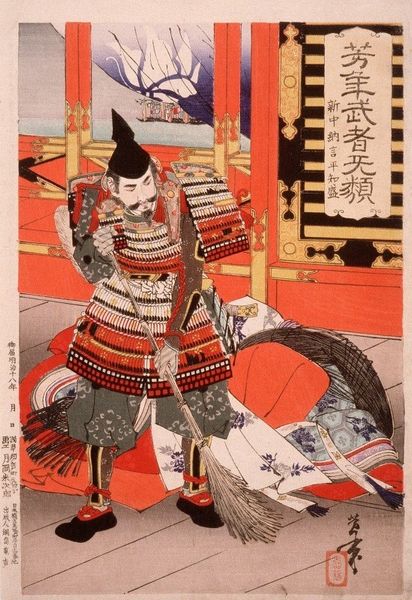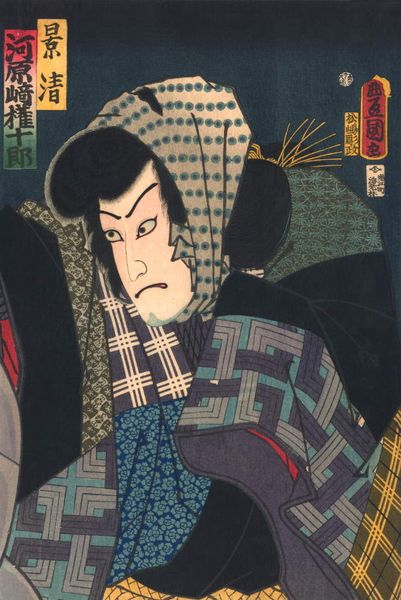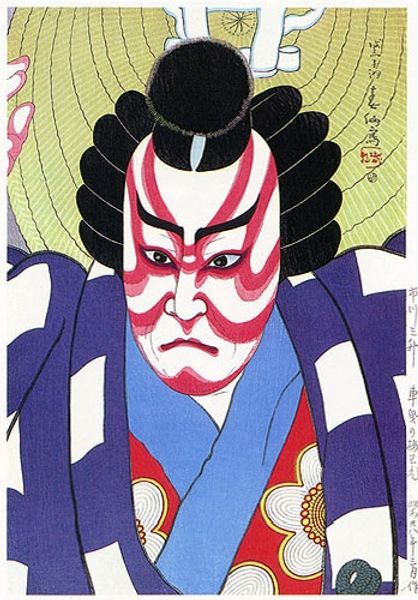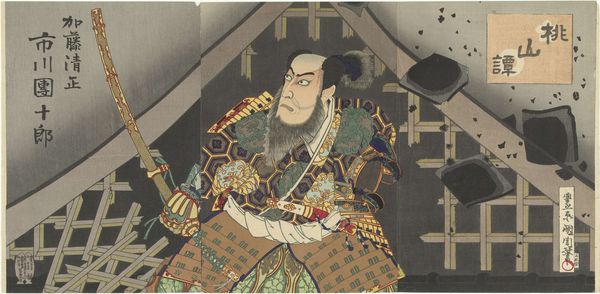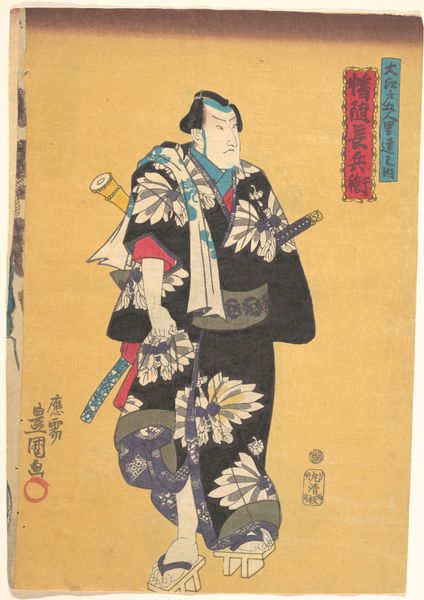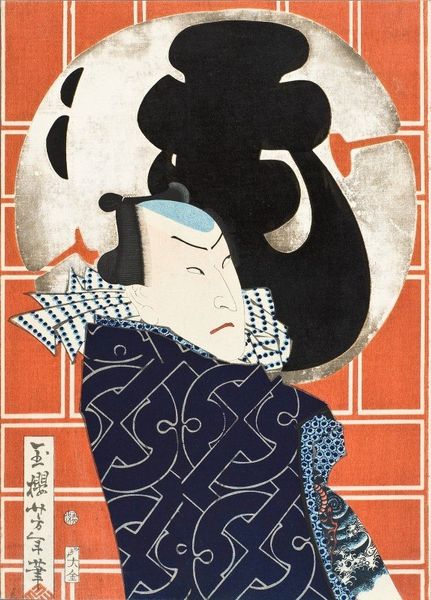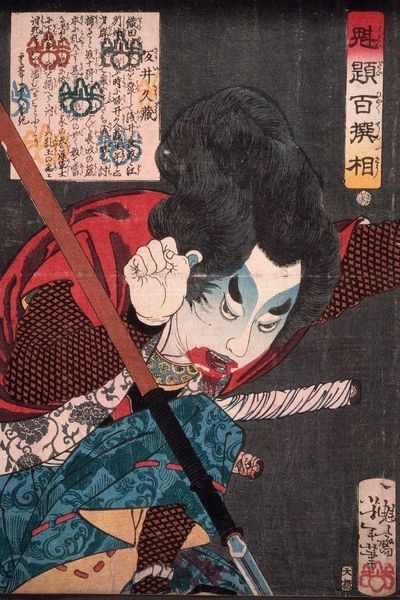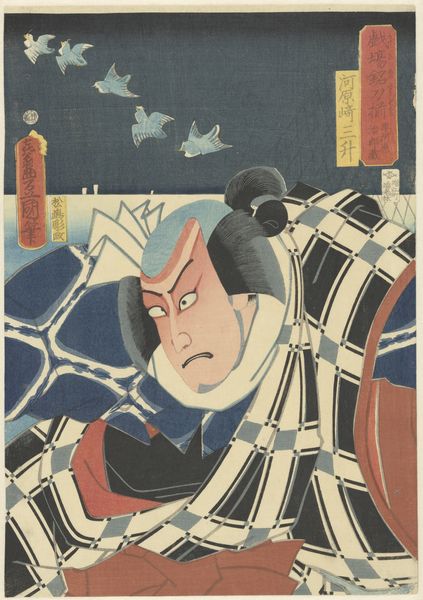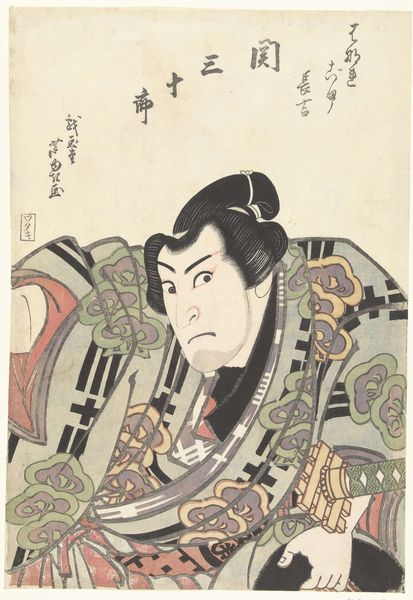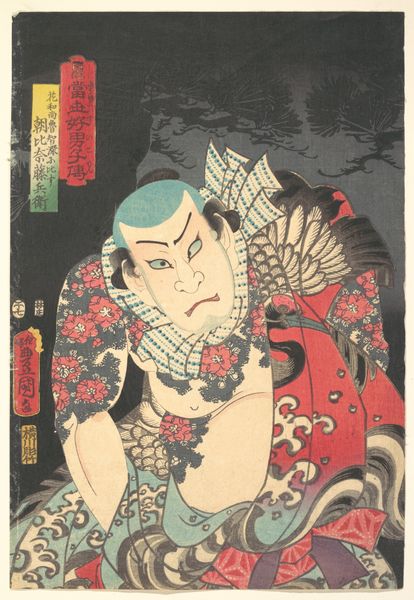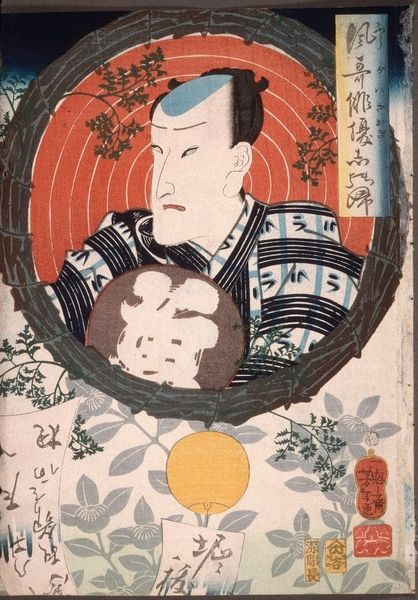
print, woodblock-print
#
portrait
# print
#
asian-art
#
ukiyo-e
#
handmade artwork painting
#
male-portraits
#
woodblock-print
#
watercolor
Dimensions: 36.8 x 25.2 cm
Copyright: Public domain
Curator: Just look at that incredible texture, the way those grey tones wash across the paper. There’s a sort of ethereal, ghostly quality that is initially quite arresting. Editor: That's quite fitting actually, as this is “Actor as Nikki Danjo,” a woodblock print by Utagawa Kunisada, dating from 1857. The character depicted, Nikki Danjo, is a villain known for his treachery and demonic associations, central to the famous kabuki play Yoshitsune Senbon Zakura. Curator: Villainy certainly oozes from the composition. The swirling mists, those almost luminous grays surrounding him—they completely detach him from reality, pushing him into the realm of archetype. And what about that beast lurking behind? Its elongated, reptilian form suggests all sorts of primordial evils. Editor: That serpent form echoes throughout Japanese mythology; it’s a powerful visual device for encoding dark intentions. In this particular print, the theatrical role of Nikki Danjo is intertwined with these darker, older beliefs. The rolled scroll he holds to his lips… consider what power it represents. Secrets, curses, perhaps even instructions from the netherworld. Curator: It's interesting how Kunisada uses those geometric patterns on the actor’s kimono, this intricate system of layering and lines that almost act like a shield, but they can’t conceal the malevolence in his expression. The meticulous detail in his costume is offset by the soft, dreamlike atmosphere around him. I see the traditional garb functioning almost as a mask; he hides in plain sight. Editor: That's precisely how the symbolism works. Consider the context in which this print would have been produced and consumed; Kabuki theater was an important cultural institution but it was also considered somewhat subversive. Kunisada, through these stylistic choices, encodes moral lessons that run deeper than the theatrical presentation. Curator: I'm struck by how, despite the overt references to the demonic and treacherous, there’s something undeniably beautiful in the artistic execution itself. The way Kunisada manages to reconcile these opposing forces makes for a strangely captivating image. It's a testament to the lasting power of symbolism. Editor: It certainly showcases how the most profound art often operates on multiple levels simultaneously—a celebration of form intertwined with layers of complex meaning.
Comments
No comments
Be the first to comment and join the conversation on the ultimate creative platform.
